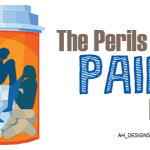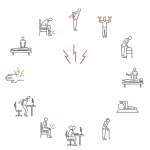 Acute gout can be very painful, causing patients to seek treatment in the emergency department. A retrospective study of pain interventions for gout in Rhode Island found that nearly 30% of patients received prescriptions for opioid medications over 30 months. Of these prescriptions, over 80% were for patients who had never been exposed to opioids prior to the visit.1
Acute gout can be very painful, causing patients to seek treatment in the emergency department. A retrospective study of pain interventions for gout in Rhode Island found that nearly 30% of patients received prescriptions for opioid medications over 30 months. Of these prescriptions, over 80% were for patients who had never been exposed to opioids prior to the visit.1
“It should be clear by now that opioids have absolutely no role whatsoever in altering the course of gout,” says Deepan S. Dalal, MD, MPH, an assistant professor of medicine in the Department of Rheumatology, Brown University, Warren Alpert School of Medicine, East Providence, R.I. “Opioids are analgesics and can reduce the pain associated with the disease. But we have other conventional medications, such as colchicine, non-steroidal anti-inflammatory drugs (NSAIDs) and steroids, that can bring down pain and inflammation within the first 24 hours.”
Study
Using the electronic health records of Lifespan, Rhode Island’s largest healthcare provider, the researchers included all patients older than 18 years who had been released from the emergency department or an inpatient facility with a diagnosis of gout between March 30, 2015, and Sept. 30, 2017. Patients with gout as a secondary, tertiary or subsequent-to-the-emergency department visit diagnosis were excluded, as were those with other crystal-induced and inflammatory arthritis.
The first encounters at the emergency department for 456 patients were included. The average patient was 58.7 years (±16.4 years) old, and 79% were men. Of these, 129 patients (28.3%) were discharged with a prescription for opioids.
Each patient’s medical record was reviewed to ensure the visit was for gout. If not, they were excluded. The first encounter during the study period was the only one included if multiple visits were indicated.
Opioid Prescription Rates
“We were not really surprised to find that nearly 30% of patients were prescribed some type of opioid,” says Dr. Dalal. “What was remarkable was the finding that 80% had not received opioids for any reason in the past. They were completely opioid naive.”
Another finding of interest was the length of the prescription. Roughly one patient in four received a prescription for 14 days’ worth of medications—a period much longer than a typical gout attack lasts.
The study also examined factors associated with an increased opioid prescription rate in the emergency department. Those receiving opioids had a higher prevalence of diabetes, polyarticular gout and opioid use at admission. “One of the strongest predictors of opioid use in gout patients was diabetes as a comorbidity,” says Dr. Dalal. “This wasn’t a survey of attitudes, but we theorize that there are a couple of things going on.”
Physicians often don’t feel comfortable giving steroids or other anti-inflammatories to diabetic patients due to issues with blood sugar control, concurrent renal failure or the possibility that an infection in the foot is mimicking gout. However, steroids are frequently used to treat gout in outpatient settings and it is possible to manage diabetes in this population using conventional agents without significant problems, says Dr. Dalal.
The study also reports that receiving appropriate anti-inflammatory treatment had no impact on the prescribing patterns of opioid medications.
The most common opioid analgesic at discharge was oxycodone or compound drugs that combined oxycodone with another analgesic (81%). Hydrocodone was used in 8% of patients and tramadol in 9% of visits.
Rationale
Although outside the scope of the study itself, Dr. Dalal and colleagues had some informal discussions with the director of quality improvement for their healthcare system. They came out with some insight into the emergency department physicians’ reasoning for prescribing opioids in this population.
“One of the leading reasons for opioid prescribing was that the emergency department doctors were not sure when the patient would be able to see their rheumatologist to assess improvement in the disease. That is where there may be some scope for improving quality of care in these patients,” says Dr. Dalal.
He suggests that finding a way to make sure these patients are followed up quickly in outpatient settings may help reduce opioid prescriptions in the emergency department.
When patients do return to the outpatient setting, it falls to the primary care physician or the rheumatologist to manage expectations going forward. Dr. Dalal points to a patient whose first two incidents of gout were treated in the emergency department. In both instances, he was prescribed an opioid for pain.
“Now, every time he comes to me with a gout attack, he expects to be given Vicodin, even though we have had discussions about how an opioid is not needed,” Dr. Dalal says. “I have had numerous talks with him, indicating that treatment with steroids and NSAIDs give an equal amount of analgesia. Still, he has an inherent belief that it won’t be enough and that it was the Vicodin that gave him immediate relief. It makes proper management harder.”
Takeaways
“The main takeaway for rheumatologists is to know that this is happening in emergency departments,” Dr. Dalal says. “There is a need to start managing expectations in pain management from the start.”
Naomi Schlesinger, MD, chief of the Division of Rheumatology and connective tissue research at the Robert Wood Johnson Medical School, New Brunswick, N.J., has also studied the diagnosis and treatment of acute gout at a university hospital emergency department. “In our 2015 study, we also found high levels of opioid use, with 52% [of gout patients] being given prescriptions for the medications,” she says.2
“Anti-inflammatory drugs are the mainstay of treatment for gout flares, yet in the emergency department opiates are given by themselves or in combination with anti-inflammatory drugs.”
She notes that although these results are interesting, the need for more studies involving different states exists. In addition, more research is needed to assess the use of opioids in the treatment of acute flares.
Kurt Ullman is a freelance writer based in Indiana.
References
- Dalal DS, Mbuyi N, Shah I, et al. Prescription opioid use among acute gout patients discharged from the emergency department. Arthritis Care Res (Hoboken). 2019 Jul 2. [Online ahead of print]
- Schlesinger N, Radvanski DC, Young TC, et al. Diagnosis and treatment of acute gout at a university hospital emergency department. Open Rheumatol J. 2015 Jun 12;9:21–26.


